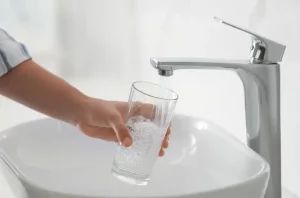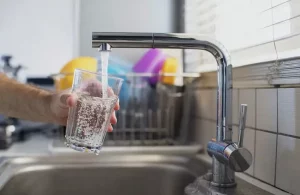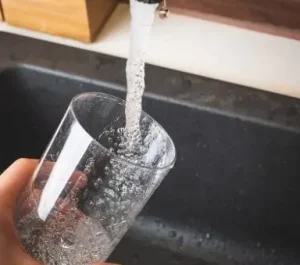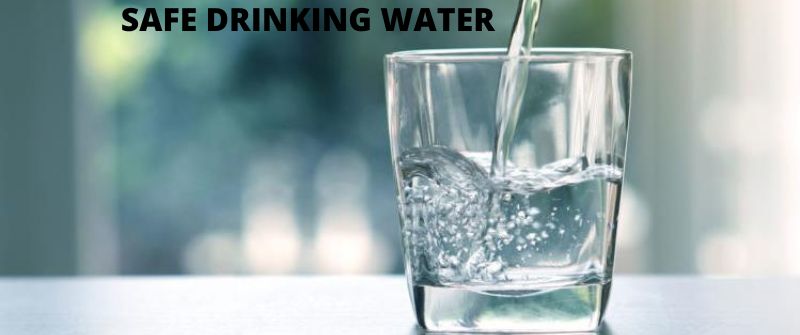Have you ever found yourself in a situation where you are thirsty and the only water at your disposal is either bathroom, kitchen or garden tap water?
Truth is that this water normally has a slightly different taste compared to water from other sources and it has a warmer temperature.
Well in such a scenario you might need to get it spot on what water to take in order to quench your thirst.
It might as well be disgusting to imagine consuming water from these sources which in one way or another is justifiable for health and hygiene reasons.
Is bathroom sink water safe to drink?
You might need to consider the urge to quench your thirst in the middle of the night when you wake up and rush to the bathroom for a glass of water.
This water is not the safest to drink because the piping carrying the water might have been made of lead whose water is most likely to be contaminated.
Other pipes made of copper can make someone think that the water is safe but let us not forget that the soldering is done by lead which might still contaminate the water.
Notably, hotels have storage tanks where their bathroom water is stored of which the water has probably been stored in the plumbing system for a while hence a remote chance that the water in these pipes has tiny amounts of absorbed lead.

Apart from lead, small creatures can infiltrate the bathroom tanks stored in neglected areas, die and rot in there,
something that is not very pleasant when you imagine consuming that water.
On top of that, the water reservoir meant for the bathrooms usually sits idle when not in use,
something that can allow bacteria to flourish and massively contaminate the water.
Other bathrooms share pipes with sinks and toilets which might put the bathroom tap at a huge contamination risk. Bathroom water might contain hard water responsible for serious poisons.
These include manganese, arsenic and copper. Unless this water is filtered and treated so as to remove these toxins and natural elements, bathroom water will whatsoever not be fit for consumption.
It is not unusual to feel a metallic taste in bathroom water which means that it contains excess minerals which could be very harmful when frequently consumed.
It is therefore likely that bathroom water is contaminated and thus very unsafe to consume because it can lead to serious lead poisoning and other dirt related illnesses harmful to one’s health.
Is kitchen sink water safe to drink?

Kitchen sink water is generally safe to drink mostly because its purpose is usually kitchen matters which ultimately means the water must be safe and hygienic for use.
Basically when plumbers fix the kitchen water pipes, they make sure that they add a water purifier to those pipes to the kitchen so as to make it safer for drinking.
One way of testing whether the kitchen sink is contaminated is by checking whether the water is cloudy or turbid when put in a clear
glass though this does not necessarily mean that the water is harmful to your health only that your sink has been contaminated and might require some filtering.
However, it cannot be ruled out that this water can contain harmful bacteria and so one can employ a purification method as a measure of caution.
Is garden tap water safe to drink
Water from a garden tap is not safe to drink because the plumbing on the pipes carrying this water is not tailored to deliver safe water for drinking.
The water is likely to contain bacteria, the odd frog and mold which is not so good for human consumption and can lead to serious health issues.
How to treat kitchen and bathroom water for drinking?
It is clear that water from the kitchen and bathroom can be contaminated in one way or another. However, there are a number of ways that can be used to make this water pure safe for consumption at home.
1. Boiling
One of the ways of treating either tap or bathroom water is by boiling, which is a relatively easy way of killing all the microorganisms and germs in the water.
The first step is to decant the water after which you can boil it until it bubbles for at least three minutes or so to completely kill the germs.
However, boiling water can make it lose its taste so you might be required to add a little salt and shake it vigorously in order to re-oxygenate it.
This method is easy to use and kills all the pathogens though it can be costly and requires a lot of fuel.

2. Chlorination
This is also another simple and effective way of ensuring that the tap water is safe for consumption.
Chlorination has chlorinated products which when introduced in the water, they kill microorganisms.
The water should be left for thirty minutes to allow the chlorine to effectively act after which it can be consumed safely.
The water can even be stored for future use under good storage conditions because of the volatile nature of chlorine.
Effects of drinking bathroom or kitchen tap water
Toxic chemicals such as bromine, lead and organotin can be found in this water which can be very harmful to one’s health when consumed.
Lead, phthalates and other related materials are used to stabilize plastics such as the polyvinyl lchloride which can release vinyl chloride in the water which is toxic and harmful to a human’s health.
When water passes through pipes contaminated with these elements, it can lead to serious health issues like kidney, liver and other organs being damaged as a result of consuming organotin which is responsible for damaging the endocrine system.
Phthalates levels beyond the required limits which are responsible for damaging a person’s endocrine system, lowers intelligence and can cause changes in behavior.
In a nutshell, water from these sources are not excessively unfit for human consumption but based on the tiny levels of bacteria and other foreign material, it is better to avoid consuming it.

As a homeowner, I am specifically keen on home improvement. I am passionate about homes, yards, and home improvement. I blog on home ideas and reviews on solutions that make homes better.

